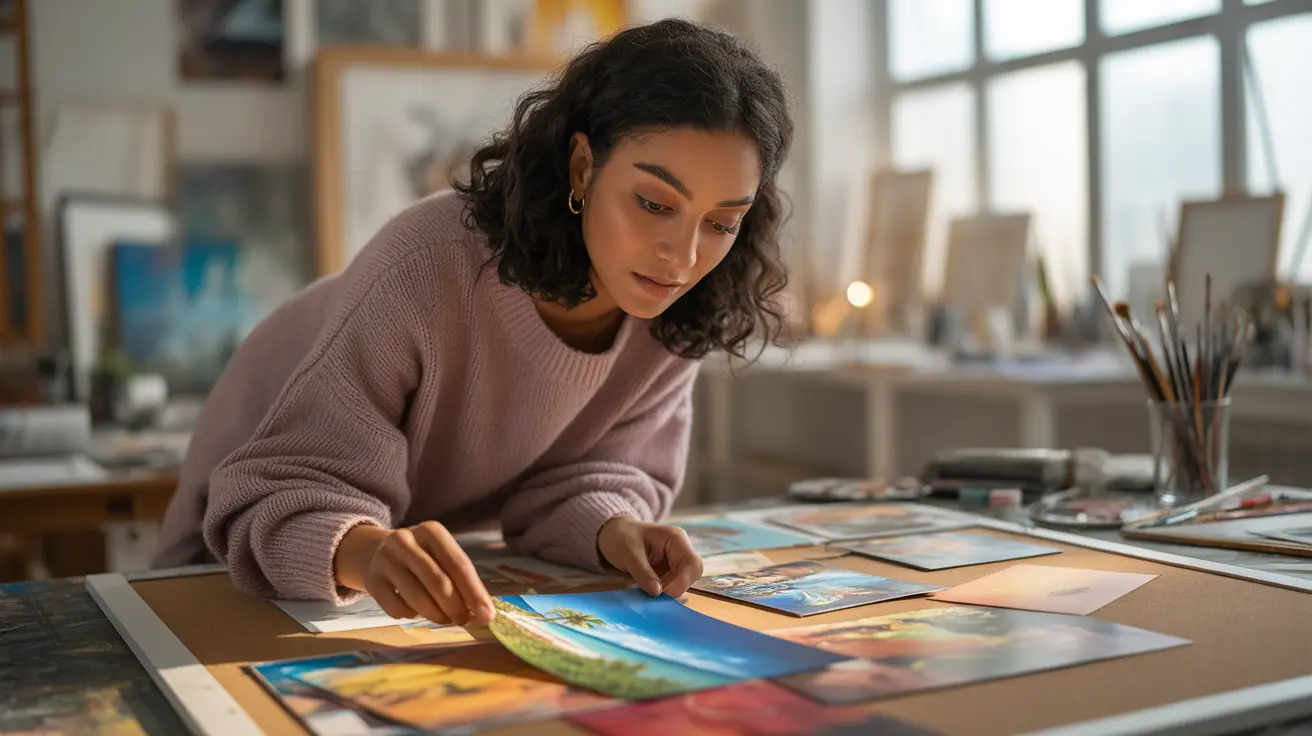Living with depression can feel overwhelming, but art therapy offers a unique and effective approach to managing symptoms and promoting emotional healing. This therapeutic technique combines creative expression with professional mental health treatment, providing a powerful tool for those seeking alternatives or additions to traditional therapy methods.
Whether you're considering art therapy sessions with a licensed professional or exploring creative activities at home, understanding how artistic expression can support mental health is the first step toward healing. Let's explore how art therapy and vision boarding can become valuable components of your depression management strategy.
Understanding Art Therapy and Its Impact on Depression
Art therapy is a mental health profession that uses the creative process of making art to improve mental, emotional, and physical well-being. Unlike casual art-making, art therapy is guided by trained professionals who understand both artistic methods and psychological principles.
During art therapy sessions, participants engage in various creative activities while processing emotions, reducing stress, and gaining personal insights. The focus isn't on artistic skill but rather on self-expression and emotional release through creative channels.
How Art Therapy Works for Depression Treatment
Art therapy helps address depression through multiple mechanisms:
- Emotional expression without words
- Stress and anxiety reduction
- Increased self-awareness
- Development of healthy coping mechanisms
- Enhancement of self-esteem
- Creation of tangible achievements
Vision Boards as a Therapeutic Tool
Vision boards represent a specific application of art therapy principles that can be particularly effective for depression management. These visual collages combine images, words, and other materials that represent goals, desires, and positive affirmations.
Creating an Effective Vision Board
To create a therapeutic vision board, consider including:
- Images that inspire positive emotions
- Words or phrases representing personal goals
- Symbols of strength and resilience
- Pictures of peaceful or energizing environments
- Representations of supportive relationships
- Motivational quotes or mantras
Combining Art Therapy with Traditional Treatment
Art therapy works best when integrated into a comprehensive treatment plan. It can complement other approaches such as:
- Medication management
- Traditional talk therapy
- Mindfulness practices
- Lifestyle modifications
- Support group participation
Getting Started with Art Therapy at Home
While professional art therapy offers unique benefits, several creative activities can be practiced at home to support mental health:
- Mindful coloring
- Journal decoration
- Emotion-based painting
- Clay modeling
- Collage making
- Simple sketching exercises
Frequently Asked Questions
How does art therapy help with depression, and what can I expect from a typical session?
Art therapy helps with depression by providing a non-verbal outlet for emotional expression and processing. In a typical session, you'll work with an art therapist who will guide you through various creative activities designed to explore your feelings and experiences. Sessions might include drawing, painting, sculpting, or other art forms, followed by discussion about the creative process and its meaning to you.
Can making a vision board really help reduce anxiety and depression symptoms, and how do I create one for my mental health?
Yes, vision boards can help reduce anxiety and depression symptoms by focusing your mind on positive goals and possibilities. To create one, gather magazines, photos, and meaningful words or quotes. Choose images and text that represent your desired emotional state, goals, and positive affirmations. Arrange these elements on a board in a way that feels inspiring and meaningful to you.
What are the main benefits of art therapy for depression compared to traditional talk therapy?
Art therapy offers unique benefits including non-verbal expression, immediate emotional release, tangible creation of something meaningful, and the development of new coping skills through creative processes. While traditional talk therapy focuses on verbal processing, art therapy allows for expression of feelings that might be difficult to put into words.
How can art therapy and vision boards be combined with other treatments for depression, and is this approach right for me?
Art therapy and vision boards can effectively complement other depression treatments like medication and talk therapy. This combination approach might be right for you if you're looking for additional ways to express emotions, prefer hands-on activities, or find traditional therapy challenging. Consult with your mental health provider to determine the best treatment combination for your needs.
Are there any easy art therapy exercises or vision board ideas I can try at home to boost my mood and self-esteem?
Yes, several simple exercises can help boost mood and self-esteem at home. Try creating a gratitude collage, drawing your emotions using different colors, maintaining an art journal, or making small daily sketches. For vision boards, start with a "self-care board" featuring activities and images that represent personal wellness and positive self-care practices.




